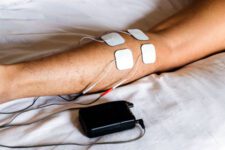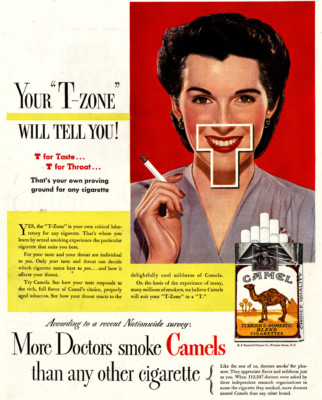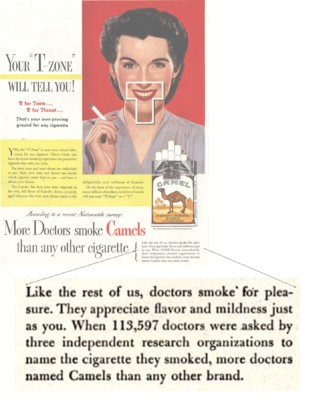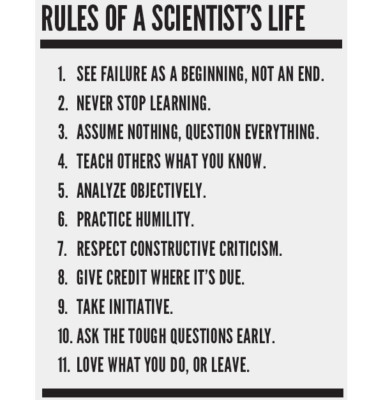Can the EMFs (electromagnetic fields) from your cell phone make you sick? A multi-trillion dollar telephone industry says “no.” A growing body of whistle blowers and people believing they have EHS (electromagnetic hypersensitivity) say “yes.” What if the whistle blowers are right? How do you defend yourself without giving up your phone?

Can pulsed electromagnetic fields treat depression?
Cranial stimulator medical device manufacturers claim pulsed electromagnetic fields can treat depression. How can you be sure the device you’re buying will work? How do you know it won’t harm you? Especially when even “Class II FDA Clearance” is really just permission to market a medical device. The FDA requires no safety or efficacy studies when it hands out this classification.

How do electromagnetic frequencies affect the human body?
I am deeply interested in this question: How do electromagnetic frequencies affect the human body? I am using detective work to find the answers. In this EMF Channel website, I am sharing my research and conclusions with you.
Can EMF Both Hurt and Harm?
My EMS (electric muscle stimulator) device uses electromagnetic frequencies to stimulate muscles. I am extremely grateful to the universe that these devices exist, because they relieve me of so much discomfort. Marketers and consumers often confuse the EMS and TENS (transcutaneous electrical nerve stimulation) technologies. EMS stimulates muscles.

TENS stimulates nerves. Both EMS and TENS use electromagnetic fields. Both devices are proof that electromagnetic frequencies can treat pain.
On the one hand, we have whistle blowers and EHS sufferers warning that cell phone EMF’s are harming us. On the other hand, we have popular EMF devices that definitely relieve pain. Both technologies use electromagnetic fields.
Are some EMF’s good, while others are bad? Which EMF’s are good? How do we get more of them? Which EMF’s are bad? How do we protect ourselves from them?
These are the questions I want to answer. EMF Channel is my research into finding the answers to these EMF questions.

Who Am I to Answer EMF Questions?
I wish I could tell you that I’m a physicist who specializes in EMF. I’m not. I have a learning disability that precludes any chance of that ever being true. What I am good at is brute force research and persistence. I am good at research. I am good at logic. I believe in the scientific method.
Besides wishing I were I physicist, I also wish I could end the story there. But I can’t, because finding the answers to EMF questions has one more somewhat gigantic obstacle. That gigantic obstacle is the problem of scientific bias.
How Greed Twists the Truth
If everyone were always truthful, this blog would not exist. Inventors would make claims. We would believe those claims. We would make buying decision based on inventor promises and product prices.
But greed twists the truth. Greed made cigarettes healthy and non-addictive. Greed buried science proving sugar is harmful.
Did You Know that Cigarettes are Healthy?
We take it for granted today that cigarettes are unhealthy. Was the truth always this obvious?
In the 1940s and 1950s, cigarettes were not only not dangerous; they were healthy!
Doctors smoked cigarettes! Doctors really loved Camels cigarettes.
Doctors wear white coats. They take Hippocratic oaths. They wouldn’t lie to you.
Right?

Camel ran scores of ads bragging that doctors overwhelmingly preferred Camel cigarettes to other brands. After all, Camel cigarettes stimulate your “T” Zone (the throat area). And everyone knows that’s healthy!
Raise your hand if you think advertising today is any more truthful than it was when doctors liked having their T-Zones stimulated.

This is greed obscuring the truth.
Cigarettes are Not Addictive
We take it for granted today that cigarettes are addictive. In 1994, cigarettes were not addictive. How do I know?
Four tobacco industry executives swore to the United States Congress, under oath and penalty of perjury, that cigarettes were not addictive.
What happened here?

Congress wanted to curb tobacco sales. These regulations would have cost tobacco companies billions of dollars. So the CEO’s of these tobacco companies lied under oath about cigarette addiction. This is greed obscuring the truth.

Sugar is Healthy. Fat is Unhealthy.
Does anyone today believe that sugar is healthy? For 50 years the US government has recommended a low-fat diet. The Harvard scientist who promoted these 1977 regulations? This scientist was Mark Hegsted, who, along with Harvard professor Dr. Frederick Stare, took $6,500 from the sugar lobby to blame fat consumption for all dietary-related health problems. You can read more about that here: 50 Years Ago, Sugar Industry Quietly Paid Scientists To Point Blame At Fat.
“By doing that, it delayed the development of a scientific consensus on sugar-heart disease for decades.”
And yet, Hegsted was a hero among nutritionists. They believed in his integrity.

Stare and Hegsted published their biased fat-hating “science” in the New England Journal of Medicine. To this day, teeth rot and hearts attack because scientists stopped looking at sugar as a disease factor.
“Having two major reviews published in an influential journal ‘helped shift the emphasis of the discussion away from sugar onto fat.'”
The sugar lobby and Hegsted were so close, Hegsted sent his drafts to the lobby for feedback. One sugar lobbyist wrote to Hegsted: “Let me assure you this is quite what we had in mind and we look forward to its appearance in print.”

Don’t Journals Guard Against Misinformation?
The New England Journal of Medicine didn’t know that Hegsted and Stare manipulated their data to make sugar look good. Journals depend on peer-reviewed science. As with sausage and the law, you don’t really want to see how peer-reviewed science actually works.
Science has not done a great job standing up to human corruption. Journals have retracted thousands of articles due to intentionally fraudulent data. When the reward is money, greed warps the data. When the reward is prestige and title, ego warps the data.
Junior academics don’t want to make their superiors look bad. What’s more important? Being right? Or not pissing off the person whose research your research invalidates? If your boss is about to get tenure, are you really going to publish the paper that invalidates 20 years’ of his work?
Science is corrupt because people are inevitably corrupt.
The problem of academic fraud is so frequent that authors Marcus and Oransky created an online database dedicated to journal retractions. Retraction Watch records retractions in their searchable database. When I searched the database for “fraudulent” data retractions, the search gave me 600 results and a message that there were many more results, but not enough room to display them.
This is Peer-Reviewed Science
If you know anyone with a brain tumor, you might be angry that this article uses fake data and so was retracted: “Glioma Gene Therapy Using Induced Pluripotent Stem Cell Derived Neural Stem Cells.”
If you know anyone with breast cancer, you might be angry that this article uses fake data and so was retracted: “Tumor tropism of intravenously injected human-induced pluripotent stem cell-derived neural stem cells and their gene therapy application in a metastatic breast cancer model.”
If you know anyone who had lung disease surgery, you might be angry that this article uses fake data and so was retracted: “Comparative study of mid-thoracic spinal versus epidural anesthesia for open nephrectomy in patients with obstructive/restrictive lung disease: A randomized controlled study.”
One journal that might be helpful in my EMF research is the IEEE (the Institute of Electronic and Electrical Engineers). Their journal has retracted 7,300 articles it had previously deemed “peer-reviewed” and “good science.”
How Journal Publishers Twist the Truth

Scientific journals contribute to the problem, too. Editors want articles in their journals to be cited in other journals. Negative outcomes rarely get cited.
Editors prefer papers that support theories. They’re not as interested in papers that fail to support theories.
“A new study suggests that, yes, there is pressure on scientists to report positive results – that is, results that support their original hypotheses” wrote Deborah Byrd in 2011.
“Papers reporting null or negative findings are in principle as useful as positive ones, but they attract fewer readers and citations, so scientific journals tend to reject them,” explained the authors of the study that found these results.
Good scientists write impartial articles. If the results don’t support the hypothesis, they write an article about the results not supporting the hypothesis.
Then journal editors reject these articles, because they’re not interesting to the journal’s readers.
Scientists who want to be published find a way for their experiments to support their hypotheses. These are bad scientists. These bad scientists get more of their articles published than the good scientists do.

How the Professional Skeptic Twists the Truth
Mark Twain remarked: “It’s easier to fool people than to convince them that they have been fooled.” One way a con artist gets away with a scam is by relying on the sucker’s fear of looking foolish for having fallen for the scam in the first place. The pain of being fooled can be so great that it turns some people into what I call “professional skeptics.”
I am not referring to people who reject baseless claims. That’s the good kind of skepticism.
I am referring to people who refuse to entertain the possibility of something being true without an FDA three-year double-blind study.
Most answers we seek will never come with that wrapping paper and bow. That kind of science is extremely expensive. It’s just not going to happen.
But the professional skeptic insists on this kind of proof, or the proposition in question is definitely a scam perpetrated by a quack who is only motivated by money.
This is just as wrong as fudging the data. This is throwing away the baby with the bath water. Rather than entertaining ideas that might have validity, they contemptuously throw away ideas unsupported to their standards.
In other words, they banish theories before those theories been vetted. They clamp down on “stupid” and “unscientific” ideas. Why is this a problem?
To a skeptic, everything is false until proven otherwise. Under this system, only hugely profitable theories can ever be proven.
The only questions that ever get three-phase FDA standard testing are drugs and surgical devices. A professional skeptic would have never given my powerful little electric muscle stimulator a chance. No one is ever going to do the kind of science on this device that a professional skeptic requires.
The professional skeptic bathes currently unsupported theories in contempt. “That device is garbage.” “This inventor is a quack.” “That’s based on junk science.”
To my mind, the professional skeptic is not scientific at all. A professional skeptic gets too much ego gratification from bashing new ideas. So it’s yet another unscientific approach to finding the truth.
Where Does this Leave Us?
I refuse to throw away good ideas just because someone might be trying to fool me. I also refuse to accept bad ideas just because it’s hard to prove a device’s efficacy on a limited budget.
In evaluating the electromagnetic options for increasing health, I remain as open minded as possible.
I’m sure that telephone companies are doing today exactly what the sugar industry did 50 years ago. They’re using renowned scientists to inject doubt into claims of EMF illness and electric hypersensitivity.
I’m sure that EMF protection device companies are pouncing on the fear of EMFs. I don’t know if their devices block harmful EMFs. Rather than throwing out the EMF complains or the EMF protection devices, I can investigate to find the truth.
I am sure that some product reviews are false. But I won’t ignore the anecdotal evidence if hundreds or thousands of people claim an EMF protection device helped them. Sometimes, anecdotes are true, and science is false.
Sick people don’t lie about getting better. But scammers can lie about being sick.
A practitioner who can produce hundreds of testimonials is the closest resource we have to finding out the truth about EMF protection device efficacy.
Conclusion
I am researching both EMF harm and EMF health using the principles I’ve outlined in this article. I will continue to post my findings here on EMFChannel.com

